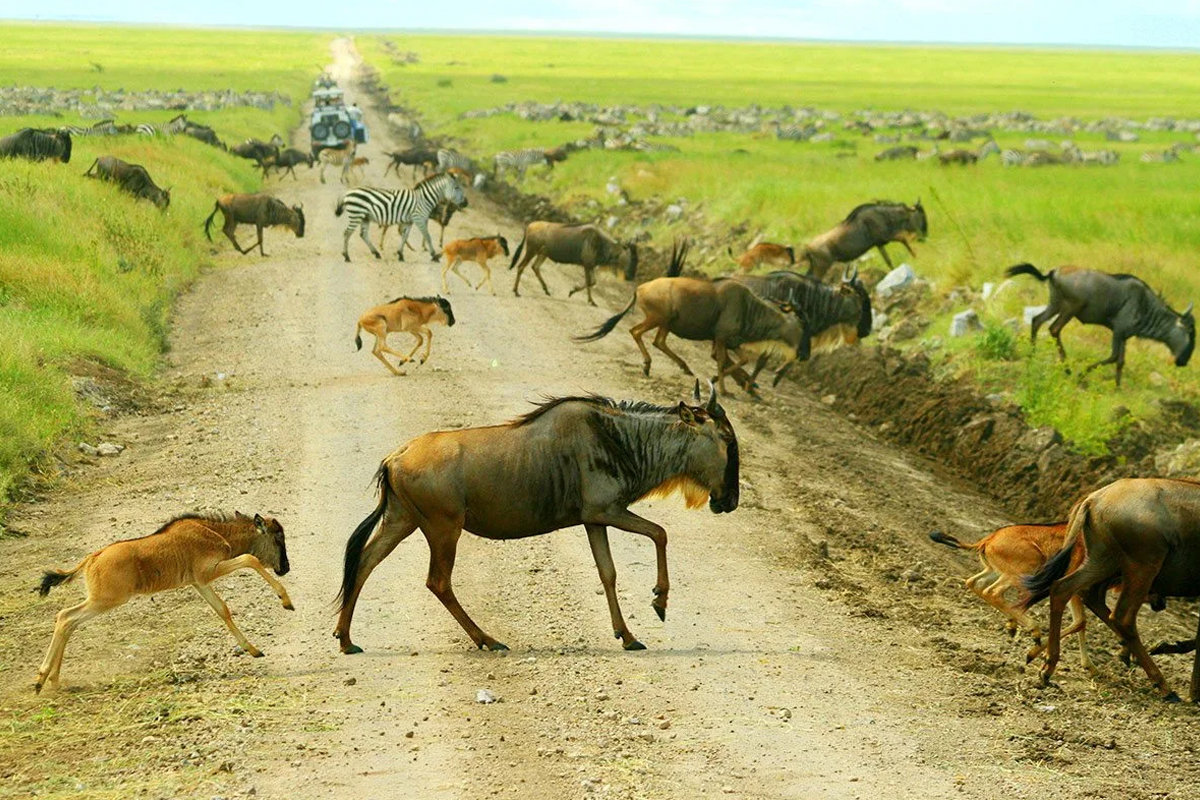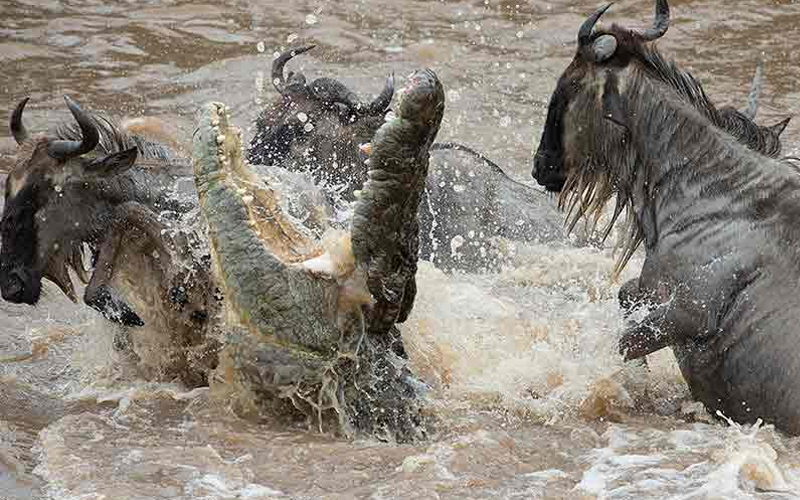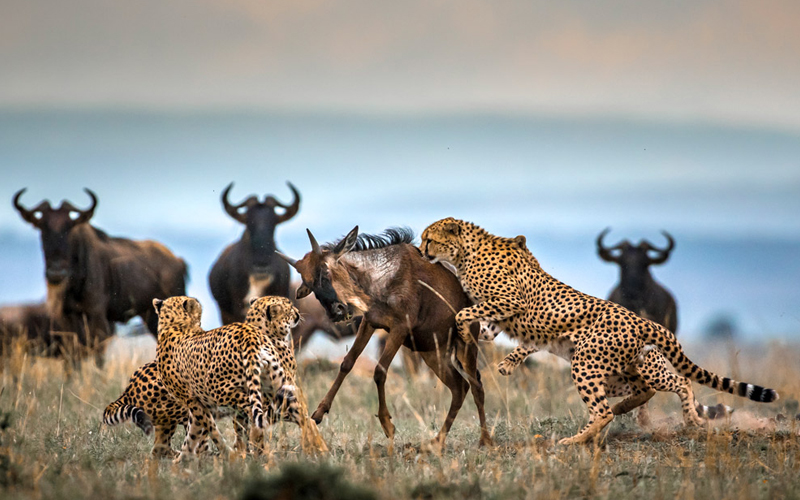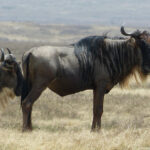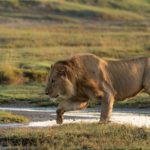The wildebeest migration is one of nature’s most spectacular events, drawing attention from around the globe. But behind this majestic spectacle lies a constant battle for survival. Predators play a crucial role in shaping the migration, influencing the behavior and numbers of wildebeest. Understanding this dynamic helps us appreciate the balance of nature and the importance of conservation efforts.
Understanding the Wildebeest Migration
The annual wildebeest migration, often referred to as “The Great Migration,” involves over a million wildebeest traveling across the Serengeti-Mara ecosystem. This migration is driven by the search for fresh grazing grounds and water. Starting in the Serengeti plains of Tanzania, the wildebeest moves in a clockwise direction through the Serengeti and Maasai Mara in Kenya, covering a distance of around 1,800 miles.
Main Predators of the Wildebeest
Lions
Lions are one of the most prominent predators of the wildebeest. These apex predators rely on their social structure and teamwork within their pride to hunt efficiently.
Hyenas
Hyenas are opportunistic predators and scavengers. Known for their complex social structures, hyenas often hunt in packs, making them formidable opponents for the wildebeest.
Crocodiles
Crocodiles pose a significant threat during river crossings. These stealthy predators use ambush tactics to capture wildebeest as they navigate the perilous waters.
Cheetahs
Cheetahs, although less impactful on the overall migration, target young or weak wildebeest. Their incredible speed makes them effective hunters.
The Role of Predators in the Migration
Predators are essential in the natural selection process, ensuring that only the fittest wildebeest survive. This predation pressure helps maintain a healthy wildebeest population by preventing overpopulation and ensuring genetic diversity.
Lions and Their Hunting Strategies
Lions operate in pride, which consists of related females and their offspring, along with a coalition of males. They employ strategic hunting techniques, often working together to ambush and bring down wildebeest. Their presence influences wildebeest behavior, causing them to be more vigilant and altering their movement patterns.
Hyenas: The Opportunistic Hunters
Hyenas live in clans led by a dominant female. They are both hunters and scavengers, capable of taking down wildebeest on their own or stealing kills from other predators. This dual role impacts the migration by adding an element of unpredictability to the wildebeest’s journey.
Crocodiles: The Aquatic Threat
Crocodiles are most dangerous during the river crossings, where wildebeest are vulnerable. Their ambush tactics create significant mortality spikes, influencing the timing and route of the migration as wildebeest may alter their patterns to avoid high-risk crossings.
Cheetahs: The Speedy Predators
Cheetahs rely on their speed to catch prey, often targeting calves and weaker individuals. While they don’t significantly affect the overall migration, they contribute to the natural culling process that keeps the wildebeest population robust.
Predator-Prey Dynamics
The interaction between predators and wildebeest is a prime example of predator-prey dynamics. This relationship maintains the balance of the ecosystem, driving evolutionary adaptations in both predators and prey. Wildebeest develop strategies to avoid predation, such as traveling in large herds and choosing safer crossing points.
Impact on Wildebeest Population
Predation during the migration results in significant mortality, but it also ensures that only the strongest individuals reproduce. This process is vital for the health and stability of the wildebeest population, as it prevents overgrazing and supports genetic diversity.
Ecological Importance of Predation
Predation plays a crucial role in controlling disease spread by removing sick individuals from the population. It also helps maintain healthy ecosystems by ensuring that prey populations do not become too large, which could lead to overgrazing and habitat degradation.
Human Influence on Predation and Migration
Human activities, such as habitat destruction and poaching, disrupt the delicate balance between predators and prey. Conservation efforts are essential to mitigate these impacts and protect the migration routes. Climate change also poses a significant threat, altering the availability of resources and affecting migration patterns.
Conservation Efforts
Efforts to protect the wildebeest migration include safeguarding migration corridors, implementing anti-poaching measures, and supporting predator conservation programs. These initiatives are crucial for preserving the natural spectacle of migration and maintaining the ecological balance.
Future of Wildebeest Migration
The future of wildebeest migration faces several challenges, including habitat loss, climate change, and human-wildlife conflict. Conservation is more important than ever to ensure that this natural wonder continues. Ecotourism can play a positive role by providing funding for conservation and raising awareness about the importance of protecting these animals and their habitats.
The impact of predators on wildebeest migration is profound, shaping the behavior, population dynamics, and evolutionary path of the species. Understanding this relationship highlights the importance of predators in maintaining ecological balance. Conservation efforts are vital to protect both wildebeest and their predators, ensuring the continuation of this extraordinary natural phenomenon.
FAQs
What triggers the wildebeest migration? The wildebeest migration is primarily triggered by the availability of fresh grazing grounds and water, which are influenced by seasonal rains.
How do wildebeest avoid predators? Wildebeest avoid predators by traveling in large herds, being vigilant, and choosing safer migration routes and crossing points.
What is the most dangerous part of the migration for wildebeest? The river crossings are the most dangerous part of the migration due to the presence of crocodiles and the risk of drowning.
How do conservation efforts help both predators and wildebeest? Conservation efforts help by protecting habitats, ensuring safe migration corridors, reducing human-wildlife conflict, and supporting ecosystem health, benefiting both predators and wildebeest.
Can ecotourism positively impact wildebeest migration? Yes, ecotourism can provide funding for conservation, raise awareness, and promote the importance of protecting wildlife and their habitats.

